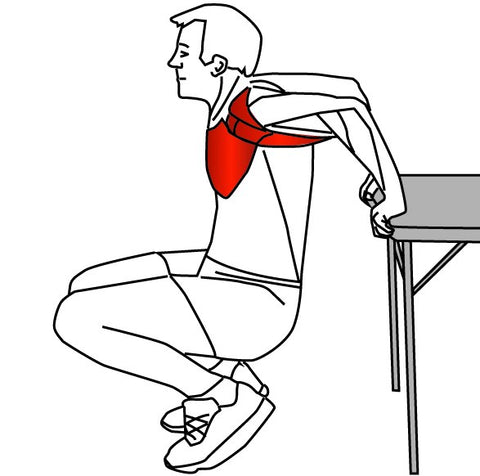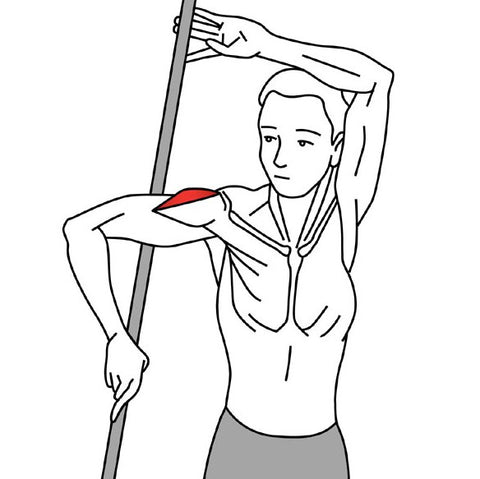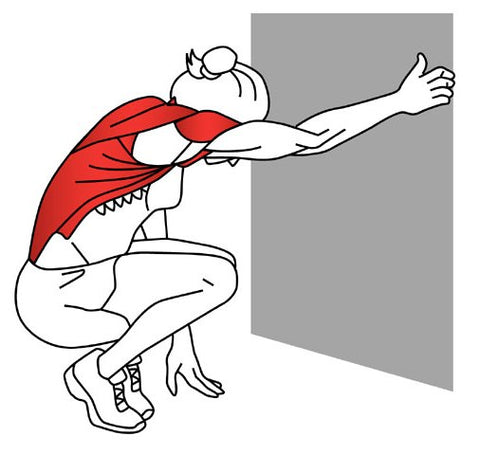http://www.nielasher.com/blogs/video-blog/76544773-trigger-point-therapy-5-great-shoulder-stretches
Can stretching really help to relieve trigger points?
There is much debate about the potential of stretching to treat trigger points, and sadly there is too little research. What we do know from decades of combined experience, is that specific stretching exercises may help to dissipate trigger points in many key muscles.
Over the years we have worked closely with exercise professionals including yoga and pilates instructors to develop stretching programs to compliment our trigger point therapy protocols.
When we are treating clients with trigger point therapy, we almost always advise stretching programs for the clients to do at home between treatments. Time after time we see a faster improvement in those clients who stick to these stretching routines.
The stretching doesn't have to take long, but it has to be performed correctly to be accurately targeted.
Here are 5 shoulder stretches that we regularly recommend to our clients:
1. Great for trigger points in the "Pecs"!

Technique
Kneel on the floor in front of a chair or table and interlock your forearms above your head. Place your arms on the object and lower your upper body toward the ground.
Muscles that you're stretching
Primary muscles: Pectoralis major and minor. Anterior deltoid.
Secondary muscles: Serratus anterior. Teres major.
Secondary muscles: Serratus anterior. Teres major.
Injury where this may help dissipate trigger points
Impingement syndrome. Rotator cuff tendonitis. Shoulder bursitis. Frozen shoulder (adhesive capsulitis). Chest strain. Pectoral muscle insertion inflammation.
Note
Keep your elbows bent and vary the width of your arms for a slightly different stretch.
2. We find this especially useful between trigger point therapy treatments for biceps.

Technique
Stand upright with your back towards a table or bench and place your hands on the edge of the table or bench. Slowly lower your entire body.
Muscles that you're stretching
Primary muscles: Anterior deltoid. Pectoralis major and minor.
Secondary muscles: Biceps brachii. Coracobrachialis.
Secondary muscles: Biceps brachii. Coracobrachialis.
Injury where this may help dissipate trigger points
Dislocation. Subluxation. Acromioclavicular separation. Sternoclavicular separation. Impingement syndrome. Rotator cuff tendonitis. Shoulder bursitis. Frozen shoulder (adhesive capsulitis). Biceps tendon rupture.Bicepital tendonitis. Biceps strain. Chest strain. Pectoral muscle insertion inflammation.
Note
Use your legs to control the lowering of your body. Do not lower your body too quickly.
3. Stretching Infraspinatus may be important for injury prevention and can help dissipate trigger points

Technique
Stand with your arm out and your forearm pointing downwards at 90 degrees. Place a broomstick in your hand and behind your elbow. With your other hand pull the top of the broomstick forward.
Muscles that you're stretching
Primary muscle: Infraspinatus. Posterior deltoid.
Secondary muscle: Teres minor.
Secondary muscle: Teres minor.
Injury where this may help dissipate trigger points
Dislocation. Subluxation. Acromioclavicular separation. Sternoclavicular separation. Impingement syndrome. Rotator cuff tendonitis. Shoulder bursitis. Frozen shoulder (adhesive capsulitis).
Note
Many people are very tight in the rotator cuff muscles of the shoulder. Perform this stretch very slowly to start with and use extreme caution at all times.
4. Trigger Points in the Trapezius muscle are extremely common. This is a great stretch for trapezius that's easy to do at home.

Technique
Sit in a squatting position while facing a door edge or pole, then hold onto the door edge with one hand and lean backwards away from the door.
Muscles that you're stretching
Primary muscles: Trapezius. Rhomboids. Latissimus dorsi. Posterior deltoid.
Secondary muscle: Teres major.
Secondary muscle: Teres major.
Injury where this may help dissipate trigger points
Neck muscle strain. Whiplash (neck sprain). Cervical nerve stretch syndrome. Wry neck (acute torticollis). Upper back muscle strain. Upper back ligament sprain. Impingement syndrome. Rotator cuff tendonitis. Shoulder bursitis. Frozen shoulder (adhesive capsulitis).
Note
Lean backwards and let the weight of your body do the stretching. Relax your upper back, allowing it to round out and your shoulder- blades to separate.
5. Trigger points in the anterior deltoid are often associated with "unexplained" shoulder pain. This stretch may quickly help relieve pain.

Technique
Stand upright and clasp your hands together behind your back. Slowly lift your hands upward.
Muscles that you're stretching
Primary muscle: Anterior deltoid.
Secondary muscles. Biceps brachii. Brachialis. Coracobrachialis.
Secondary muscles. Biceps brachii. Brachialis. Coracobrachialis.
Injury where this may help dissipate trigger points
Dislocation. Subluxation. Acromioclavicular separation. Sternoclavicular separation. Impingement syndrome. Rotator cuff tendonitis. Shoulder bursitis. Frozen shoulder (adhesive capsulitis). Chest strain. Pectoral muscle insertion inflammation.
Note
Do not lean forward while lifting your hands upward.
Stretching for Pain Relief and Rehabilitation

Комментариев нет:
Отправить комментарий